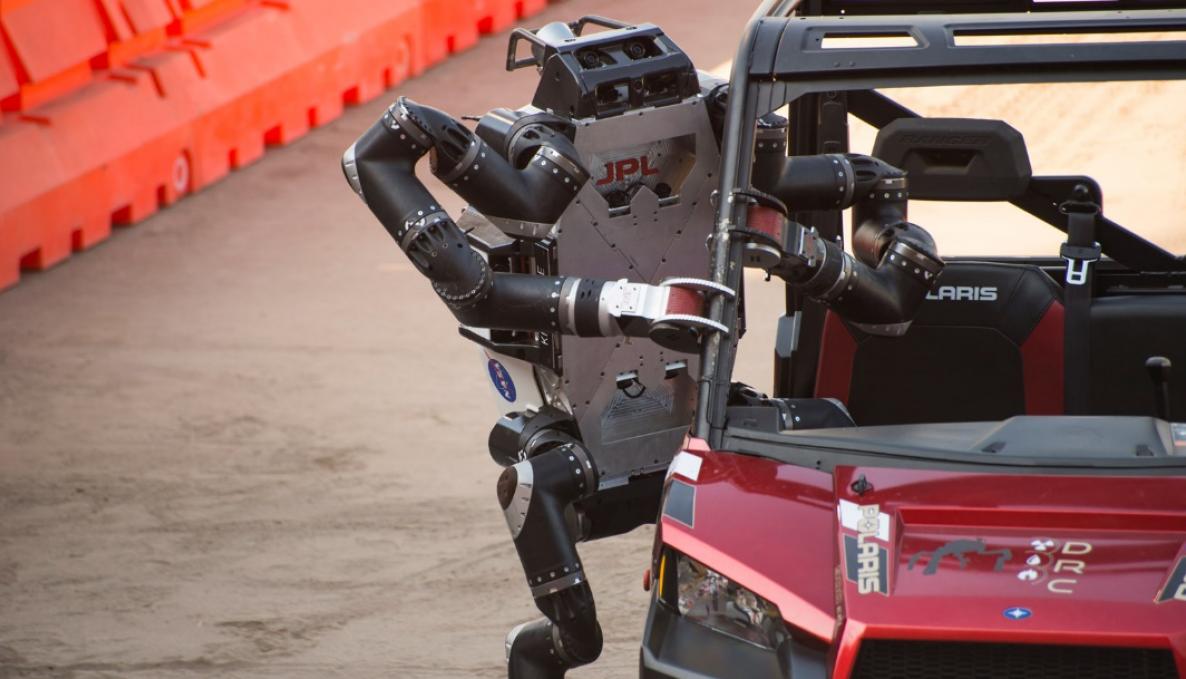TACTILE SENSITIVITY AND ROBOTIC MANIPULATION: SENSORIZED THE ARTIFICIAL HAND OF ROBOSIMIAN, THE ROBOT DEVELOPED BY NASA THAT PROVIDES ASSISTANCE IN THE EVENT OF NATURAL DISASTERS

Perceive stiffness, size, physical properties and consistency of different objects through artificial touch during robotic manipulation. These are the results of a study - published in the scientific journal Frontiers in Neurorobotics - of a group of researchers from The BioRobotics Institute of the Sant'Anna School of Advanced Studies, Pisa, Italy, which has sensorized one of the artificial hands of RoboSimian, the four-limb robot developed by Jet Propulsion Laboratory (JPL) of NASA, the US National Aeronautics and Space Administration, and designed to provide immediate intervention in the event of natural disasters, avoiding exposing rescuers to risks and dangers.
The study was carried out by the Neuro-Robotic Touch Lab of the BioRobotics Institute of the Sant’Anna School of Pisa in collaboration with the JPL of NASA, the Italian Institute of Technology (IIT) and the Ca’ Foscari University of Venice. Thanks to the synergies put in place between the PARLOMA project funded by the Italian Ministry of Education, University and Research, the Dubai Future Foundation through the Guaana.com platform. and the NASA, the robotic hands of RoboSimian can now grasp different objects without destroying or dropping them.
“Today we present the design and development of a sensorized artificial hand for the control and perception of the physical properties of the manipulated objects - says Luca Massari, first author of the study, who is concluding his PhD at The BioRobotics Institute of Sant'Anna School of Advanced Studies and a current research fellow of Ca’ Foscari University of Venice -.Tactile feedback is transmitted through a soft sensor integrated into a robotic hand; the sensor consists of an optical fiber, containing the Fiber Bragg Grating transducers (FBG), incorporated in a polymer matrix and subsequently integrated into the artificial fingers “.
The researchers, through various activities including the manipulation of different objects under various conditions, have figured out the system’s ability to acquire information.
“Cylinders of various sizes and materials, an air balloon but also a simple commercial chip - continues Massari - we have shown that the robotic hand is able to accurately detect the dimensions and the consistency of the materials touched and to grasp fragile objects without breaking them or let them slip and dynamically adapt the position of the robotic fingers when handling objects that change volume”.
“The system, and in particular the fiber pose relative to the hand, was designed also based on a finite-element numerical model” - adds Edoardo Sinibaldi, researcher at the Italian Institute of Technology.
“RoboSimian is a disaster response robot – explains Kalind Carpenter, Jet Propulsion Laboratory (JPL) of NASA - it is designed for heavy lifting applications and interacting with the human world. These two things have different requirements. The hand is capable of crushing force when needed, modulating that for a delicate task was missing. This work fulfilled this goal and opened the door for to more future capabilities”.
“Future research activities will address the integration of the sensorized artificial hand in a robotic arm - adds Calogero Oddo, who coordinated the study together with Kalind C. Carpenter of NASA -. We will also experiment this tactile sensing technology within different operational scenarios, from medical robotics and assistance to Industry 4.0”.
REFERENCES OF THE ARTICLE
Luca Massari, Calogero M. Oddo, Edoardo Sinibaldi, Detry Renaud, Joseph Bowkett, Kalind C. Carpenter, Tactile Sensing and Control of Robotic Manipulator Integrating Fiber Bragg Grating Strain-Sensor, Frontiers 2019. https://www.frontiersin.org/articles/10.3389/fnbot.2019.00008/abstract



